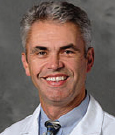“Overdiagnosis has been overblown” in concerns voiced about lung cancer screening with low-dose computed tomography, Andrea B. McKee, MD, told participants at the opening session of the 2014 Chicago Multidisciplinary Symposium in Thoracic Oncology. Dr. McKee is Chair of the Department of Radiation Oncology, at the Sophia Gordon Cancer Center, Lahey Hospital & Medical Center, Burlington, Massachusetts.
Although it has been reported that the rate of overdiagnosis using low-dose computed tomography in the National Lung Screening Trial was 18%, “this was calculated based on an assumption that the patients were only going to live 7 years,” Dr. McKee said, “and that’s actually not very accurate.” Using the actual expected lifetime of a patient in the screening program, “the overdiagnosis rate is 11% vs no screening, and 9% vs chest x-ray. It is about 2.6% vs no screening and 1.2% for chest x-ray,” she added.
“Access to quality computed tomography lung screening represents one of the greatest opportunities to improve outcomes for patients diagnosed with lung cancer in the history of the disease,” Dr. McKee stated.
The symposium was sponsored by ASCO, along with the American Society for Radiation Oncology (ASTRO), the International Association for the Study of Lung Cancer (IASLC), and the University of Chicago. The 787 participants included clinical, medical, radiation, and surgical oncologists; medical physicists; nurses and nurse practitioners; physician assistants; residents/fellows; and students. International participants represented countries in Europe, Australia, North American, and South America.
‘Amazing Consensus’
The U.S. Preventive Services Task Force “recommends annual screening for lung cancer with low-dose computed tomography in adults aged 55 to 80 years who have a 30 pack-year smoking history and currently smoke or have quit within the past 15 years.”1 More than 40 national societies have endorsed that recommendation. “There is amazing consensus,” Dr. McKee noted, “but few are screened.”
There are “lots of barriers,” she said, including costs, anxiety, and concerns about false-positive results and radiation exposure. Some fear that promoting screening could actually encourage smoking.
The Rescue Lung, Rescue Life program was established at Lahey Hospital and Medical Center to deal with these concerns and put in place basic physical and organizational structures needed to run a safe and responsible lung cancer screening program. Based on experience with mammography, the Rescue Lung, Rescue Life program encourages the involvement of primary care physicians.
About 4% of patients have a suspicious low-dose computed tomography result, and “we decide as a team” what to do next, Dr. McKee said. “A lot of times it ends up being a conservative approach.” Among patients screened and followed through June 2014, 25 of 1,654 had surgery; 20 (1.2% of all patients) were diagnosed with lung cancer (18 early stage); and 5 patients (0.3%) had either benign disease or metastatic disease to lung from another primary tumor. She noted that “80% of surgical cases actually had lung cancer, so we are doing a pretty good job of using this system and not intervening in patients who don’t have cancer.”
Dr. McKee predicted, “After 2 years, based on our hospital size, we will be saving one life every 3 weeks or so.”
‘Sense of Urgency’ Needed
To promote adequate use of screening, there has to be “a sense of urgency,” Dr. McKee said. “Lung cancer kills 450 people every day,” she noted. “That’s like a jumbo jet crashing every day.”
The sense of urgency may receive added impetus from “failure-to-screen lawsuits,” Dr. McKee added. With the U.S. government and many medical organizations recommending screening, these lawsuits are expected to be brought by patients who met the National Lung Cancer Screening Trial criteria for high risk but were not offered screening and then presented with later-stage disease.
Physicians and patients also need to know how fast and easy the screening is, Dr. McKee said. In the Rescue Lung, Rescue Life program, screening “takes less than 10 seconds, requires no changing, and no IV,” she reported. “More than 75% of patients come back the next year.”
Getting the Message Out
A study presented at the symposium found that patients at high-risk for lung cancer are more likely to receive low-dose computed tomography lung screening when their primary care providers are familiar with the recommended guidelines. Conducted among primary care providers, including physicians, physician assistants, and nurse practitioners affiliated with Wake Forest Baptist Medical Center in North Carolina, the study also found that they reported ordering a chest x-ray, which is not recommended, more often than a low-dose computed tomography.
In response to a question from The ASCO Post, the study’s lead author, Jennifer Lewis, MD, Assistant Chief of Medicine, Department of Internal Medicine at Wake Forest, said that they were not able to determine why a chest x-ray was ordered more often. “I have to wonder if it could be related to cost, because cost was the most reported barrier. It could also be that they know who to screen, but they don’t know the correct test,” she noted. The lack of adherence to the recommendations “is mainly because they are new, and primary care providers are just not aware of the data yet.” The study concluded that educational interventions are critical to increasing low-dose computed tomography screening.2
‘Imaging Is Not Diagnosis’
“Imaging is not diagnosis,” Michael J. Simoff, MD, Associate Professor of Medicine and Director of Bronchoscopy and Interventional Pulmonology at Henry Ford Hospital in Detroit, reminded participants. He cited a study that found that among 100 patients, all with computed tomography–negative lymph nodes, on staging, 22% were positive for malignancy.
With positron-emission tomography and computed tomography for diagnosing lung cancer, “the accuracy is about 88%, not 100%. We can’t rely on them,” Dr. Simoff said. “Tissue is still required for a diagnosis.”
Transthoracic needle aspiration is a commonly used approach to detected nodules and has the advantage “of not having to have a lot of technology,” Dr. Simoff said. “For large nodules, the accuracy is 96%, and for small nodules, defined as < 2 cm, 74%. But the risk of pneumothorax in this patient population is 21% to 24%, depending on the literature that you look at. The need for chest tubes is only about 5% to 7%, but still the risk in the population who have emphysema is significantly high.”
Advanced Diagnostic Techniques
“Transbronchial biopsy with fluoroscopic guidance hasn’t really changed in 30 years,” Dr. Simoff said. “The yield for nodules < 2 cm is less than 20%.” The nodule usually has to be at least 2 cm and greater than 3 cm “to get a good piece of information.”
Using computed tomography and then incorporating ultrasound has allowed for the identification of smaller lesions but didn’t improve the ability to reach them with a probe. “So we’ve moved into electromagnetic navigation bronchoscopy,” Dr. Simoff said. This technology incorporates computed tomography imaging with a GPS-like system to create three-dimensional information. “We place the patient into an electromagnetic field so that we can then use the technology to guide us to the lesion,” he explained.
“The locatable guide has been the greatest tool in my eyes to allow us to move out peripherally, because when we rotate it, we can actually direct it in eight different directions. I can now have control out into those 16th, 18th, and 20th generation airways to allow me to move. Once we’ve gone through that airway, we leave a small catheter out there. We pull out the locatable catheter guide, and then we can put biopsy forceps, ultrasound probes, and other tools out into the periphery of the lung to make the diagnosis.”
This has allowed diagnostic yields of 75% for nodules ≤ 2 cm in the outer third of the lung, Dr. Simoff reported. “The yields are moving up into the same category as transthoracic needle aspiration. The advantage is that our risk for pneumothorax is < 4% vs nearly 25%. The concomitant advantage is that we can go on and take a look at these patients for staging at the same time.” ■
Disclosure: Dr. McKee is an advisor/speaker for Covidien and a speaker for Varian. Drs. Lewis and Simoff reported no potential conflicts of interest.
References
1. Moyer VA, on behalf of the U.S. Preventive Services Task Force: Screening for lung cancer: U.S. Preventive Services Task Force recommendation statement. Ann Intern Med 160:330-338, 2014.
2. Lewis J, Petty WJ, Tooze A, et al: Low-dose CT lung cancer screening practices and attitudes among primary care providers at an academic medical setting. 2014 Chicago Multidisciplinary Symposium in Thoracic Oncology. Abstract 13.




